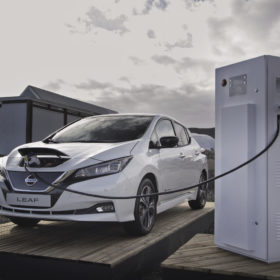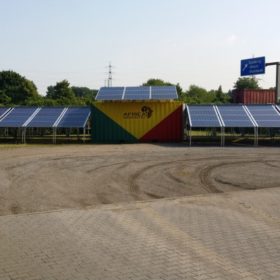What’s in store for storage? $620bn
The rise of batteries will attract that headline figure in investment up to 2040, say analysts, as exponential growth in EV ownership, falling stationery system costs and the needs of the world’s grid-poor regions combine to boost lithium-ion technology.
‘Renewables mini grids need good policy frameworks’
The International Renewable Energy Agency says Asia is offering the largest amount of people mini grid access, with the development of such systems mostly led by governments. Global installed capacity reached 308 MW at the end of 2017.
SolarEdge’s latest quarterly results show robust growth
The inverter maker took number one spot in the US from SMA this year, and acquired majority stakes and IP in uninterrupted power supply company Gamatronic and storage system provider Kokam. While other companies have consolidated, SolarEdge managed to report robust results.
Nine-month figures from China lay bare impact of May 31 policy U-turn
Although industry representatives are predicting no falling-off in the market next year, there is nothing in the latest set of figures to support such a positive outlook.
Argentina issues secondary legislation for distributed generation
The new decree, which regulates the law for DG promulgated at the end of 2017, is intended to support distributed generation of renewable energy sources under net metering. The fund for DG, though, has shrunk by half in value thanks to currency depreciation.
Ukraine has 121 MW of solar under net metering
Around the half of this capacity was deployed from April to September, according to new official statistics released by the Ukrainian authorities.
Germany added almost 200 MW of new PV capacity in September
The new capacity figure fell on the previous month, mainly because fewer ground-mounted systems went online. The monthly retreat of FIT payments will stay at 1% for the next three months. According to SolarPower Europe, Germany will be by far the largest market in Europe, with 3 GW of new capacity this year.
French turn on nuclear opens €45 billion renewables investment opportunity
The French government is expected to show a draft plan on how to achieve nuclear generation reduction plans. After minister Hulot left the government in August, amidst disagreements with Macron’s handling of the nuclear lobby, the parliament has voted for a bill to reduce nuclear generation capacity. If the plans are realized in compliance with the climate targets, solar and wind deployment could grow significantly.
Risk of a ‘bridge to nowhere’ effect in Africa’s electrification
A report from the United States’ Rocky Mountain Institute finds more work is needed on the demand side for microgrids and other rural electrification projects in Africa. Such projects, says the report, often focus on building generation capacity, with little consideration for the ability of end users to make good use of energy.
Inverter maker and battery giant charge into US market
German inverter maker SMA has joined forces with China’s BYD after losing US market share to Solaredge, which this year linked up with Kostal to optimize communication interfaces between inverters and storage applications.









